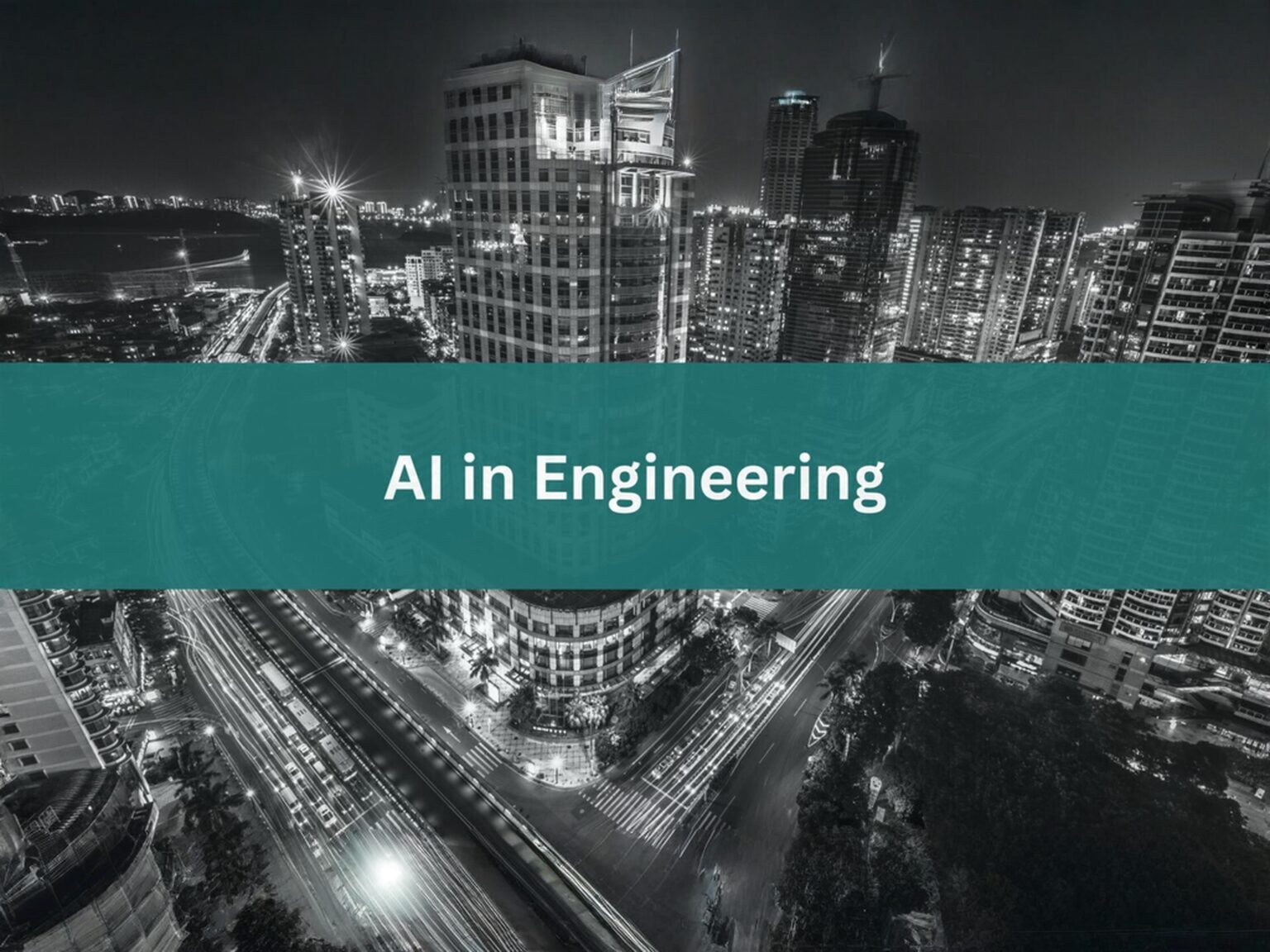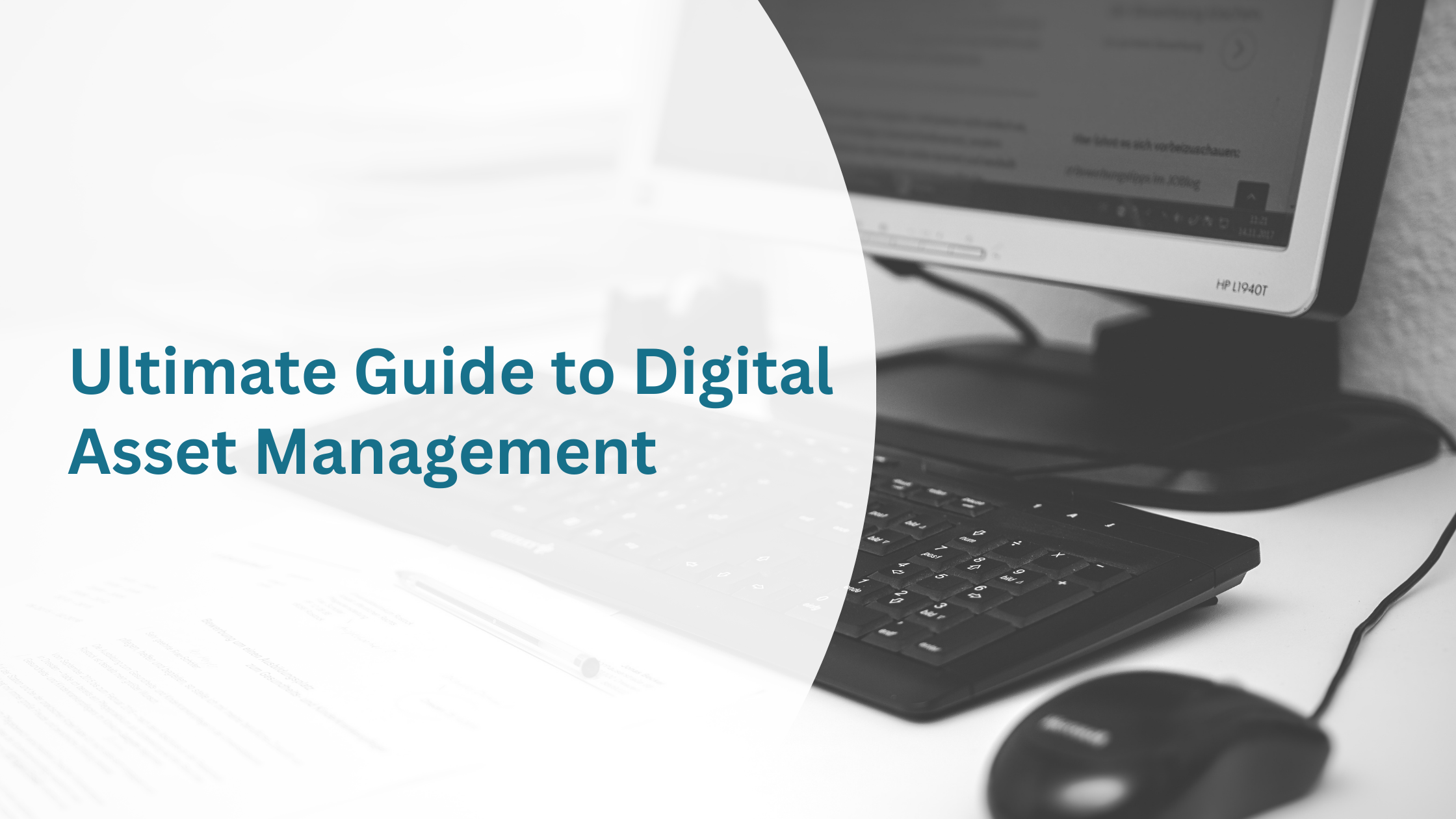How to Use AI in Engineering: Top 10 Applications + Industry Impact
Apr 22, 2025

Artificial Intelligence (AI) is no longer a futuristic concept in engineering—it’s here, and it’s changing how we work today. From automated design recommendations to robot “dogs” that walk job sites, AI is giving engineers the tools to solve problems faster, smarter, and more sustainably. This guide breaks down how AI is used across the engineering world, the tools leading the way, and what it all means for your team’s future.
Understanding AI and Engineering
According to Precedence Research, the global artificial intelligence engineering market size is calculated at $17.41 billion in 2025 and is forecasted to reach around $281.47 billion by 2034, accelerating at a CAGR of 36.37% from 2025 to 2034.
AI and engineering are changing how teams approach complex problems. Engineers can now use machine learning and data-driven models to automate and streamline those processes instead of manually tweaking designs, running calculations, or reacting to equipment issues after they happen.
That means less time spent on repetitive tasks and more time spent solving real challenges. From optimizing a product design to building autonomous systems that can make decisions in real time, AI is there to do the heavy lifting in the background.
However, the goal isn’t to replace engineers—it’s to free them up. With AI handling the routine, engineers can focus on the creative, strategic work that drives innovation forward.
Machine Learning’s Role in Engineering and AI
Machine learning (ML) is the engine behind many of AI’s most powerful applications in engineering. It’s what allows systems to learn from data. That means spotting patterns, improving over time, and making smarter decisions without needing to be explicitly programmed for every scenario.
In an engineering context, ML can analyze historical data from past projects, simulations, or equipment performance to predict outcomes, optimize designs, and detect issues early. For example, it can forecast when a machine is likely to fail based on usage patterns or recommend design tweaks to improve efficiency or reduce costs.
The best part? The more data it gets, the better it performs. That continuous learning loop gives engineers a serious advantage, allowing them to make more informed decisions, reduce errors, and accelerate timelines.
Tools and Technologies for Artificial Intelligence in Engineering
Bringing AI into engineering isn’t just about big ideas—it’s about using the right tools. Today’s engineers have access to technologies that can automate routine tasks, unlock smarter insights, and push innovation forward.
Here’s a closer look at the key tools powering AI in engineering right now:
Machine Learning Frameworks
Machine learning frameworks are the building blocks behind many AI applications in engineering. Engineers (especially those in R&D, simulations, or predictive modeling) often use them to create custom AI applications.
They help teams build, train, and deploy models that can analyze patterns, predict outcomes, and automate decisions—all at scale. These frameworks give engineers the power to do more with their data.
Let’s take a look at some examples of ML frameworks:
1. TensorFlow
TensorFlow is one of the most popular ML frameworks out there—and for good reason. Built by Google, it’s known for its scalability and performance. It’s a go-to for building and deploying machine learning models at scale.
In engineering, it’s used for tasks like:
- Defect detection
- Material behavior modeling
- Predictive maintenance
- Computer vision for inspections
- Optimizing complex systems in real time
It’s flexible, powerful, and ideal for teams working on AI at scale.
2. PyTorch
Loved by researchers and engineers alike, PyTorch is known for being more intuitive than TensorFlow, making it a go-to for prototyping and experimenting.
In engineering, PyTorch often powers:
- Design optimization
- Stress modeling
- Fluid dynamics
- AI-assisted control systems
It’s helpful when you need custom AI solutions that integrate tightly with simulation workflows.
3. Scikit-learn
Best for smaller projects and rapid prototyping, Scikit-learn is ideal for applying machine learning techniques like regression, clustering, or classification on engineering datasets.
If you’re looking for something lightweight and easy to use, Scikit-learn is a great entry point. It’s perfect for smaller AI projects—like predicting equipment failures or running quick data analyses—and plays well with Python-based engineering tools.
While it’s not as deep as TensorFlow or PyTorch, it’s incredibly efficient for getting results fast.
AI-Driven Software
AI isn’t just powering models—it’s built into the tools engineers already use. From generative design in CAD platforms to AI-accelerated simulation tools, software is getting smarter. These systems help engineers design faster, iterate more efficiently, and uncover better solutions with less manual effort.
For example:
1. CAD With AI Integration
Modern CAD tools like Autodesk Fusion 360 and SOLIDWORKS now come with built-in AI features. Think generative design that explores thousands of options based on your constraints, or auto-routing features that intelligently handle complex geometries. AI helps eliminate tedious tasks, letting engineers focus on solving real problems, not redrawing lines.
2. Simulation Programs
Simulation tools like Ansys, Altair, and Siemens Simcenter are incorporating AI to make modeling smarter. By learning from previous simulation runs, AI can improve mesh quality, speed up convergence, and even suggest optimal design parameters. This means less time waiting on simulations—and more time using the results to move projects forward.
IoT and AI in Engineering
When AI meets IoT (Internet of Things), engineering gets a serious upgrade. AI helps make sense of the massive volumes of data collected by sensors in smart factories, infrastructure, or heavy equipment.
Together, IoT and AI can predict equipment failures, optimize energy usage, and even trigger automated responses—without human input.
In platforms like Siemens MindSphere (now Insights Hub) or Schneider Electric’s EcoStruxure, AI learns from real-time data to make smarter decisions faster. It’s how modern engineering teams move from reactive to proactive—keeping systems running, costs down, and performance high.
Why Use AI in Engineering
Adopting AI in engineering isn’t just about keeping up with the latest tech—it’s about working smarter, reducing risk, and opening new doors for innovation. AI is helping engineering teams do more with less while raising the bar on quality and performance.
Here’s why you should be using AI in Engineering:
Cost Reduction
AI helps engineering teams cut costs in ways that go beyond automating tasks. AI reduces the kinds of waste that eat into budgets—whether that’s extra labor, raw materials, or unplanned downtime. It also helps reduce the need for physical prototypes and repetitive testing, speeding up development without sacrificing quality.
In short: smarter decisions up front = fewer expensive fixes later.
Improved efficiency
AI gives engineers the ability to move faster without losing precision. From running complex simulations in a fraction of the time to streamlining project handoffs with automated documentation, AI tools keep things moving without bottlenecks.
It also frees up your team’s time by handling repetitive tasks. This allows you to focus on strategy, creativity, and problem-solving instead. This results in faster turnarounds, tighter workflows, and more time for the work that actually drives value.
Enhanced Innovation and Design Optimization
AI doesn’t just improve what already exists—it pushes design into new territory. By analyzing massive datasets and generating thousands of variations, AI gives engineers the power to uncover bold, efficient, and even unconventional solutions that a human team alone might miss.
Essentially, it acts like a second brain in the creative process, offering insights, suggestions, and simulations that fuel better outcomes. In a world where speed and originality matter, AI turns ambition into action.
Improved Safety
In industries where safety is mission-critical, AI is more than a tool—it’s a safeguard.
AI plays a major role in reducing risk on job sites, in facilities, and throughout the product lifecycle. It can predict potential failures, monitor structural health in real time, and even power robotics that take on dangerous tasks, keeping people out of harm’s way.
And because AI is always learning, its ability to detect safety hazards or system anomalies only gets better with time.
How Is AI Used in Engineering
AI is helping engineers shift from reactive problem-solving to proactive innovation. From optimizing product designs to facilitating real-time error detection, AI empowers engineers to focus on innovation and strategic decision-making.
Here’s how to use AI in engineering:
1. Product Design Optimization
Designing a product isn’t just about making it functional. It’s about making it better, faster, and more efficient than what came before. AI helps engineers cut through the noise by analyzing performance data and identifying what works (and what doesn’t).
With machine learning in the mix, teams can test hundreds of iterations digitally, without having to build them all.
It’s like having a virtual design partner that never sleeps or misses a detail. And because AI keeps learning from each project, its recommendations get sharper over time. In turn, this gives engineers an edge with every new product cycle.
How to Use AI in Engineering: Real-World Example
One example of this is Altair. Altair is revolutionizing engineering by integrating AI into its design and simulation platform, HyperWorks®. Traditionally, running complex simulations to test product designs could take days or even weeks.
With Altair’s AI-powered tool, PhysicsAI™, engineers can now simulate and predict product performance up to 1,000 times faster than conventional methods. This acceleration enables rapid iteration, allowing teams to explore more design options in less time.
2. Generative Design
Generative design flips the traditional design process on its head. Instead of sketching concepts and manually refining them, engineers can input their design goals—like material type, weight, or strength—and let AI do the heavy lifting. The system rapidly generates thousands of viable design options, many of which might never have been considered otherwise.
Remember, AI for engineering design isn’t just a time-saver—it’s a creativity boost. It helps teams break away from “the way we’ve always done it” and discover smarter, leaner solutions that meet performance and cost goals.
The result? Designs that are more efficient, more cost-effective, and sometimes a little unexpected, in the best way.
How to Use AI in Engineering Real-World Example
For example, take General Motors (GM). When they applied generative design to a seat bracket, the AI produced 150+ design options. They chose one that was 40% lighter and 20% stronger than the original, proving that smart design starts with smart tools. This not only improved performance but also reduced material usage and assembly complexity.
“Generative design is a way for us to explore different design solutions for parts and components of our vehicles by using the cloud and artificial intelligence to combine the engineer and the computer. By getting them to work together, we can come up with part-design solutions that would be impossible to generate with either the computer or the engineer working on their own.” —Kevin Quinn, Director of Additive Design and Manufacturing at GM.
3. Automation and Robotics
AI is the brain behind today’s most advanced automation. While traditional robotics followed rigid instructions, AI-powered systems can adapt to changes, learn from experience, and handle more complex tasks with minimal oversight. That makes them perfect for fast-paced or high-risk environments where speed, safety, and precision are non-negotiable.
And the best part? These robots don’t just do—they think. They can respond to real-time variables, optimize their actions based on current conditions, and even work alongside humans without missing a beat.
How to Use AI in Engineering Real-World Example
The BMW iFactory is a great example here. Their AI-powered robots don’t just assemble parts—they inspect them, adjust on the fly, and communicate with team members to stay aligned. That kind of responsive workflow leads to fewer errors and faster turnarounds.
4. Autonomous Systems
Autonomous systems use AI to navigate the world and make decisions without human input. Whether it’s a drone mapping a site or a self-driving vehicle dodging traffic, these systems process data in real time and adjust on the fly. It’s a massive leap forward for industries like transportation, logistics, and field engineering.
What used to require constant human supervision can now run on autopilot, with impressive results. These systems improve safety by reducing human error and increase productivity by operating around the clock, even in hazardous or hard-to-reach environments.
How to Use AI in Engineering Real-World Example
Take Boston Dynamics’ Spot. Who is Spot? Boston Dynamics’ robotic dog. It can walk construction sites, avoid obstacles, and even collect data. That means fewer site visits, safer workflows, and more accurate progress tracking without pulling engineers away from high-value work. That frees up project managers to focus on high-level planning instead of routine walkthroughs.
5. Predictive Maintenance
Traditionally, equipment breaks—and then we fix it. With AI, that model is changing. Predictive maintenance uses data from sensors, logs, and past performance to spot patterns that hint at trouble before it strikes.
It’s proactive, not reactive—and it saves serious time and money. Think of it as an early warning system for your entire operation. It helps teams avoid unplanned downtime, reduce repair costs, and keep projects on schedule by addressing issues before they spiral into bigger problems.
How to Use AI in Engineering Real-World Example
For example, Siemens has advanced predictive maintenance by integrating generative AI into its Senseye Predictive Maintenance platform. This enhancement allows for a more conversational and intuitive user experience, enabling maintenance teams to interact with the system using natural language queries.
The AI analyzes data from sensors, logs, and past performance to detect anomalies and predict potential equipment failures before they occur.
“By harnessing the power of machine learning, generative AI, and human insights, we’re taking Senseye Predictive Maintenance to the next level. The new functionality makes predictive maintenance more conversational and intuitive – helping our customers to streamline maintenance processes, enhance productivity, and optimize resources.” — Margherita Adragna, CEO Services, Digital Industries at Siemens.
6. Detect Errors and Corrections Early On
No one likes finding mistakes late in the game, especially when they’re costly to fix. That’s where AI comes in. It can scan drawings, plans, or models to flag errors and inconsistencies early in the process, before they reach the build phase. The earlier you catch an issue, the easier (and cheaper) it is to correct.
It also helps standardize quality checks across teams, so nothing slips through the cracks when projects move quickly or change hands. In a fast-moving project pipeline, that’s a huge win.
How to Use AI in Engineering Real-World Example
Autodesk’s BIM Collaborate platform, for example, uses AI to detect clashes in BIM models before teams get on site. When teams upload architectural, structural, and MEP models, the system automatically identifies clashes, grouping them by system, object type, or layer—saving days of rework and thousands in labor costs.
7. Computer Vision
AI-powered computer vision lets machines interpret visual information, like giving them eyes and a brain. It can be used for everything from automated inspections to detecting surface defects, all at a speed and accuracy that human inspectors can’t match. That means faster checks, more consistent quality, and fewer costly errors.
How to Use AI in Engineering Real-World Example
GE Aerospace has developed an AI-enabled Blade Inspection Tool (BIT) to enhance the inspection process of turbine blades in aircraft engines. This tool uses computer vision and machine learning algorithms to analyze images of turbine blades, identifying potential defects with greater accuracy and consistency than traditional methods.
In fact, the AI system reduces inspection times by 50%, ensuring quicker maintenance and improved engine reliability.
“Innovation is at the core of our work and remains key in keeping engines operating safely and reliably. More consistent and accurate inspections will help keep these blades healthy and the engine reliable.” —Nicole Jenkins, Chief Manufacturing Engineer at GE Aerospace.
8. Smart Factories
Smart factories are the next evolution of manufacturing, and AI is at the center of it all. These facilities use sensors, robotics, and data analytics to monitor every step of the process, and AI ties it all together. It helps predict supply chain needs, balance workloads, and reduce waste, often without human intervention. You can think of smart factories as factories that think for themselves.
How to Use AI in Engineering Real-World Example
Siemens’ Electronics Works Amberg (EWA) in Germany is a prime example. The facility leverages AI, advanced analytics, and predictive maintenance to minimize downtime and ensure consistent product quality.
Through its smart factory initiative, Siemens’ Amberg plant maintains a 99.9% Overall Equipment Effectiveness (OEE). Seamless communication between machines and real-time data analysis help the facility stay ahead of issues, proving how well digital and traditional manufacturing can work together.
9. Collaborative Design Assistance
Collaboration is easier when you have tools that do more than just track changes. AI-powered design assistants can suggest improvements, surface relevant data, and keep everyone aligned across disciplines. It’s like adding a super-organized teammate to your project who’s always one step ahead. And when deadlines are tight, that kind of support matters.
How to Use AI in Engineering Real-World Example
Kautex-Textron partnered with Monolith AI to predict fuel sloshing noise—a challenge that once required heavy physical testing. By combining acoustic data, 3D CAD models, and test parameters, engineers built self-learning models that sped up design iterations, cut prototyping costs, and improved collaboration across teams.
“With Monolith’s machine learning method, we not only solved the challenge, we also reduced design iteration times and prototyping and testing costs.” —Dr. Bernhardt Lüddecke, Global Director of Validation at Kautex.
10. Create Better Proposals and Win More Business With DAM
Let’s face it—your engineering work won’t win projects if it gets buried in a slow or outdated proposal process.
According to the State of Proposals in AEC Marketing Report, 63.2% of marketing teams dedicate more than half of their time to proposals, and an alarming majority (64%) submit proposals on the day of the deadline.
This is where a Digital Asset Management (DAM) tool with AI-powered features can help. AI in DAM can help teams automate time-consuming tasks and free up time to focus on strategy, design wins, and standout storytelling.
How to Use AI in Engineering Real-World Example
One example of DAM for Engineering is OpenAsset. OpenAsset is purpose-built for engineering firms looking to sharpen their proposals and stay competitive. By implementing AI-powered features into digital asset management, OpenAsset makes it easy to store and organize your digital assets, such as project images, team bios, and other marketing collateral, so proposal teams can spend less time searching and more time building content that wins.
“I know in my role I can’t live without this tool [OpenAsset]. We have confidence in where everything is and that it’s the best version to use. It saves so much time and so much frustration that we previously had with file setups and searching and not trusting old imagery,” —Adria Klein, Asset Coordinator at Robins & Morton.
Real-World Engineering Applications of Artificial Intelligence
We’ve already walked through some examples of how AI in engineering is reshaping the industry, but the impact doesn’t stop there. Across industries, companies are putting AI to work in new and exciting ways, solving problems that once felt too complex, too costly, or too time-consuming.
Here are a few more examples of how artificial intelligence in engineering is delivering serious results in real-world scenarios.
Rolls-Royce: AI for Engine Inspections
Rolls-Royce is transforming jet engine inspections with AI, moving toward what they call the “IntelligentEngine.” Their AI systems use digital imagery and machine learning to assess the health of jet engines without having to take them apart.
By analyzing borescope images with deep learning models, the system can detect early signs of damage like cracks or corrosion with greater accuracy than traditional inspections.
“Our new Intelligent Borescope capability brings together cutting-edge technology and AI in a way that has never been used in the aviation industry before”—Adriano Pulisciano, Imaging and Computer Vision Specialist at Rolls-Royce.
This AI-driven approach shortens maintenance times and helps airlines keep planes in the air longer, all while reducing the risk of undetected issues. It’s a win for safety, efficiency, and uptime.
And the impact is significant: inspection times were reduced by 75%, and data processing times decreased by 95%, leading to projected savings of up to £100 million (~$125 million) over five years.
“This technology will not only speed up inspection times, but also transform many aspects of our business through the capture and analysis of high-quality standardized data from all of our engines.” —Adriano Pulisciano, Imaging and Computer Vision Specialist at Rolls-Royce.
Arup: AI-Powered Structural Design Software
In collaboration with Chinese software provider PKPM, Arup launched PKPM-AID, China’s first commercial intelligent structural design software.
The platform combines Arup’s 20+ years of AI-enhanced structural optimization with PKPM’s design engine to generate the “fittest” structural design based on engineer-defined criteria. It’s already been used on complex projects like long-span roofs and tall buildings.
Compared to traditional trial-and-error workflows, PKPM-AID improves design speed, lowers material usage, and reduces embedded carbon emissions, without compromising safety or functionality.
“[The pioneering tool with PKPM] will further drive the digital transformation of the construction industry, helping China achieve its high-quality and sustainable development.” —Liu Peng, Fellow and Director at Arup
Schneider Electric: AI for Energy Efficiency
Schneider Electric is using AI to drive large-scale energy efficiency. Through its EcoStruxure platform, the company provides businesses with real-time insights to monitor, analyze, and reduce their energy consumption.
The platform combines machine learning and IoT data to spot inefficiencies, forecast demand, and adapt consumption dynamically, without requiring manual intervention. This optimizes usage across everything from lighting and HVAC to manufacturing equipment, helping clients cut costs and emissions at the same time.
The results are measurable: Schneider Electric has helped customers achieve up to 40% energy savings with EcoStruxure Building solutions across various industries. The company’s goal is to democratize access to these capabilities, scaling sustainable innovation for businesses of all sizes.
As highlighted in a recent Forbes feature, Schneider’s strategy is not just about tech—it’s about accessibility. They’re working to bring AI-driven energy solutions to companies of all sizes to accelerate a more sustainable future.
“With AI, we can analyze all variables to formulate an optimal manufacturing set-up that can help to deliver the most sustainable, cost-effective, and highest-quality product possible.” —Philippe Rambach, Chief AI Officer (CAIO) at Schneider Electric.
How to Implement AI for Engineering
Getting started with AI doesn’t mean overhauling everything you do—it means identifying where AI can help, building the right foundation, and scaling from there. If you’re looking to optimize a specific workflow or enhance your overall engineering process, here’s how to roll out AI in a way that sticks:
1. Identifying Needs and Objectives
Before you invest in any tools or data models, you need clarity on the problem you’re trying to solve. Is your team struggling with slow design iteration cycles? Unplanned equipment failures? Bottlenecks in project delivery?
Start by pinpointing high-impact opportunities where AI can add real value. A clear objective gives your implementation strategy focus and helps to avoid shiny object syndrome.
Think of this as the blueprint stage: you’re setting the scope before the build begins.
2. Data Collection and Preparation
AI is only as good as the data behind it. That’s why collecting, cleaning, and organizing your data is a foundational step. You’ll need access to historical records, design files, sensor outputs, or whatever dataset aligns with your goals.
This stage can take time, but it pays off. Clean, structured data leads to better insights and ensures your AI tools aren’t learning from flawed or incomplete information. If your data isn’t centralized yet, this is the time to start connecting the dots.
3. Choosing the Right AI Tools and Platforms
Once you know your goals and have your data in order, it’s time to choose the right tools. From off-the-shelf software to custom machine learning platforms, there’s no shortage of options—but not all of them are built with engineers in mind.
Look for solutions that align with your workflows, integrate with your existing tech stack, and offer support for training and onboarding. And don’t forget scalability—what works for one project should work for twenty.
4. Model Development and Testing
This is where the magic starts. If you’re building custom models, your team will use historical data to “train” the AI to recognize patterns, make predictions, or generate designs. Then comes testing—running the model against new data to see how well it performs.
It’s normal to go through multiple rounds of fine-tuning. You’re aiming for accuracy, reliability, and transparency—especially in fields where the stakes are high. In other words, test it like you’d test any engineering system: thoroughly and repeatedly.
5. Implementation and Monitoring
Once your model is trained and ready to go, it’s time to bring it into your day-to-day operations. But implementation isn’t “set it and forget it.” AI tools need ongoing monitoring to ensure they’re delivering the expected results—and adapting to new data over time.
Regular check-ins, performance audits, and user feedback loops keep things on track. Plus, as your team gets more comfortable with the system, you can explore new ways to scale or optimize your approach. The most successful AI rollouts evolve alongside your business.
AI for Engineers: How AI Is Reshaping the Careers of Engineers
According to the World Economic Forum, while AI is expected to disrupt 85 million jobs by 2025, it’s also projected to create 97 million new ones, opening the door to entirely new opportunities across industries.
However, when it comes to engineering, AI isn’t replacing engineers, but it is reshaping what their jobs look like. For those in AEC, that means spending less time on repetitive design iterations, calculations, or clash detection, and more time making high-level decisions with the help of AI-enhanced tools.
“Embrace AI as a partner, not a competitor. Strengthening your unique skills and technology will amplify your impact.” —Randy Deutsch, FAIA, LEED AP
Moreover, new roles are emerging that combine traditional engineering expertise with AI proficiency. Professionals are now expected to understand and leverage AI technologies to enhance construction, design, and operational efficiency.
This evolution is creating opportunities for engineers to engage in innovative roles that were previously non-existent, such as AI-focused research scientists, UX designers for AI applications, and strategic product leaders in AI development for AEC.
We’re also seeing traditional roles expand into hybrid responsibilities.
Structural engineers, for example, are now expected to work alongside tools that use machine learning to optimize designs. Civil engineers are tapping into AI models that help forecast environmental impacts or automate risk analysis. Even project managers are leveraging AI for smarter scheduling and cost estimation.
As the tech continues to evolve, so will the skillsets. By 2030, 70% of the skills used in most jobs will change, with AI emerging as a catalyst. Engineers are increasingly expected to understand the basics of data analysis, collaborate with software developers, and make ethical decisions about how AI is used on their projects.
Future Trends of AI in Engineering
AI in engineering isn’t just a short-term productivity boost—it’s shaping the future of how we design, build, and maintain everything from buildings to infrastructure.
“The AEC industry’s future lies in harnessing sustainability, AI, and collaboration. These trends will create buildings that thrive and are efficient, healthy, and built to last. Stakeholders across the industry can embrace this vision to shape a better tomorrow.” —Andrew J. Solano, Managing Partner at Emtec Consulting Engineers
As the technology matures, we’re seeing clear trends that signal where the industry is headed next. These developments promise to make engineering more sustainable, connected, and collaborative than ever before.
AI and Sustainability
Today, sustainability is a core requirement and will continue to be as we move forward. In fact, 90% of construction professionals believe a shift towards environmental sustainability is on the rise.
How is AI helping? AI is helping engineers make smarter choices early in the design process, optimizing for material use, energy efficiency, and carbon impact.
From generative tools that reduce steel in structural frameworks to energy modeling software that runs simulations on renewables, AI gives teams the insights to design for performance and sustainability from day one.
Expect to see AI playing an even bigger role in achieving ESG goals and supporting green certifications, helping firms meet both regulatory and client expectations without adding more to their workload.
Collaborative Robotics
Robots aren’t coming to take over—they’re coming to help. Collaborative robotics (or “cobots”) are designed to work side by side with human engineers and tradespeople, taking on repetitive or high-risk tasks so teams can focus on skilled work.
AI gives these robots the ability to learn, adapt, and respond in real time, making them ideal for dynamic environments like construction sites or prefabrication facilities.
Looking ahead, as AI-driven robotics gets smarter and safer, it’ll become a standard on the jobsite—improving speed, precision, and worker safety all at once.
Augmented Reality
Augmented Reality, powered by AI, is bridging the gap between digital models and real-world conditions. Whether it’s overlaying BIM data on-site through AR headsets or using AI to recognize changes in the field and suggest real-time fixes, this technology is redefining what “seeing the full picture” actually means.
In the near future, AR combined with AI will enable more efficient inspections, clash detection, and client walkthroughs—bringing clarity to every stage of the project.
Integration With IoT and Digital Twins
When AI meets IoT and digital twins, the result is a living, learning version of the built environment. Sensors collect real-time data from buildings or infrastructure, AI interprets it, and digital twins visualize it all in a way that’s easy to understand and act on.
This integration allows engineers to monitor performance, predict failures, and make proactive adjustments before a single issue disrupts operations. It’s the future of lifecycle engineering: connected, intelligent, and continuous.
AI in AEC at OpenAsset
AI is transforming how AEC professionals design, build, and deliver projects—and that shift is only accelerating. But AI can only go so far without the right systems in place to manage your project data and visual assets. That’s where OpenAsset comes in.
As the AEC industry leans into AI-driven workflows, OpenAsset’s advanced AI features help firms stay organized and move faster by making it easy to find, use, and repurpose the marketing collateral and project content that powers winning proposals.
Simply put: Centralize your assets to save time, respond to RFPs faster, and win more business.





